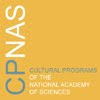Date: Fri, 9 Mar 2007 15:12:53 -0500 (EST)
Responding to Suzanne’s, Aguilera-Hellweg’s and Catherine Waldby’s points on the Science-phobic/Image-phobic/Content-phobic, particularly in relation torepresentations and Suzanne’s questions on "naturalization" of the embryo and foetus in visual culture.

In 1997, I first exhibited my project, “Still Life”, large colorphotographic portraits of late foetal and neonatal bodies with a range ofcongenital abnormalities, at the MacLaurin Gallery, Scotland, the Gallery ofPhotography, Dublin, and later at the Art Exchange in New York. My interest was to look at (and show) nature's asymmetry and question my own disquiet andfascination with these tender beings, bringing them to light and into the light from the historic medical collection and research laboratory. In each countrythe reaction to the images followed a similar path. The gallery in Scotland was closed following numerous complaints and incendiary media coverage and finallyreopened following the intervention of the Scottish Arts Council, for viewingby adults only with the caution, “viewers may find these photographs deeplydisturbing”. Dublin’s Gallery of Photography blacked out their large publicwindows and insisted that visitors read a descriptive outline of the showbefore entering the galleries, also cautioning that the work may be“upsetting” and “not suitable for children”. National tabloids followed with headlines such as, “How Low Can You Sink” and “The Grimes Reeper”, etc. The experience for me was not pleasant but it did enable me to map the boundaries and survey heterosexuality’s fortifications surrounding this “primal marvel”, to quote Suzanne Anker, at first hand.
Over the course of this project I spoke to hundreds of gallery visitors anddifferent representative groups about the work’s content. Their positionsranged from supportive to accusatory. The majority were in the latter category, including many scientists, who viewed the work as an exploitative and violent infringement on the sanctity of our being (interestingly, other animals notconsidered) and/or the sanctity of the institutions of science and art. It was, in their view, pro-abortion, anti-abortion, an insult to women, to fatherhood,to beauty, to hope, to people with disabilities, to pregnant women, and deeply suspect on an ethical level.

The sight of strange corporeal figurations inspires contradictory responses: recognition and denial, fascination and fear, identification and rejection, contagion. When a form departs from our preferences and desired fantasies, we gaze with unrest and suspicion. Comforting distinctions between what is human and is not become confused. Catherine Waldby in her recent post reminds us“that we are all just one step away from monstrosity”. I agree.
Margrit Shildrick’s, “Vulnerable bodies and ontological contamination”(Routledge 2001), offers a further insight on the anomalous human body and thesubjects in Still Life, “The encounter with the others who define our ownboundaries of normality must inevitably disturb for they are both irreduciblystrange and disconcertingly familiar, both opaque and reflective. They enableus to recognise ourselves, they are our own abject. As Grimes himself notes, 'Images of what we have denied turn towards us.' And once the initial shock ofconfronting what is usually excluded had passed, I found myself not repulsed,but moved to tears by the unaccountable beauty of the bodies. Beyond the marksof a violent and violating science that were evident in the confinement, both materially to specimen jars, and discursively to the category of abnormality,it was possible to acknowledge a siblingship which claims us.”

In the end, it was and is just our mutated body on display in a culture whereengagement with pathology and our bodies is highly problematic, save where that visual engagement is imbued with narratives of success and maps of past and impending conquest. Images from the biosciences feed well into this, they do not confront, they are “other”, we see the precision bombing screen effect, not ourselves. We invite a good science story, we like it to deliver in dayglo. Our inner colonial travels from micro to nano continents demand knock out home
movies and travel snaps to communicate to diverse audiences and potential funders. Pain and mortality are triumphed and progress is assured.
http://www.karlgrimes.net/html/stilllife.html
http://www.karlgrimes.net/html/fnature.html
http://www.karlgrimes.net/html/mutter.html
Karl Grimes
Artist, Lecturer
Dublin City University
Ireland
Images: Karl Grimes. Untitled, from Still Life, Chromogenic Print. 6x4ft. 1997.
to post a response, click on the "comment" button below
to return to the main page, go to www.visualcultureandbioscience.org
to post a response, click on the "comment" button below
to return to the main page, go to www.visualcultureandbioscience.org

No comments:
Post a Comment